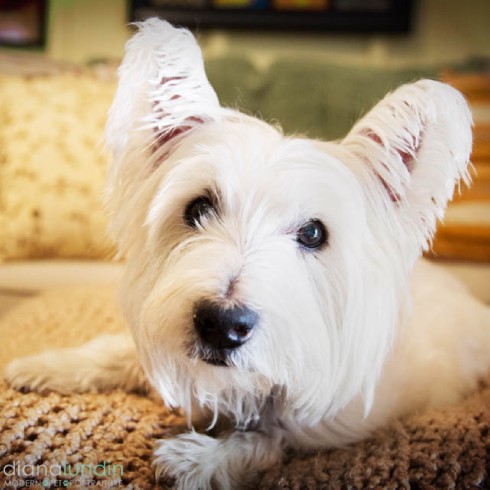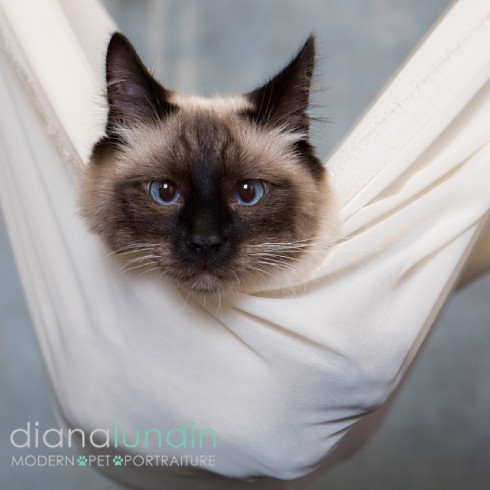5 Tips to Better Pet Photography
Tuesday, July 15, 2014 | By: Diana Lundin
 Hey, I want to take photos of your dogs and cats! But if you’re feeling the need to do it yourself, here are a few tips that can help capture the personality of your beloved.
Hey, I want to take photos of your dogs and cats! But if you’re feeling the need to do it yourself, here are a few tips that can help capture the personality of your beloved.
1. Focus on your pet's eyes
Yes, it’s a cliché to say that the eyes are the window to the soul, but all portrait photographers, whether they photograph beings of flesh or fur, focus in on the eyes. If you are shooting with a wide aperture, it’s okay for the nose to be out of focus as long as the eyes are in focus. And if the eyes are in a different focal plane, the eye closest to the lens should be the eye that’s in focus. Now for artistic reasons, you may select the nose to be in focus rather than the eyes but for the most part, keep your eye on the eyes. And think about catch lights. Catch lights are the light source reflected in your pet’s eyes and it brings life into a photo. You want them. A photo without catch lights make the eyes look dark and dead.
2. Get down on their level
You see your dog, usually, looking down from your level but why not get down to their level and get a pet’s eye view of your pet? Getting down closer gives your portrait more intimacy. It becomes a portrait, not a snapshot. If you get lower than your animal, you can create an entirely different emotion. Experiment with levels.
 3. Use a fast shutter speed
3. Use a fast shutter speed
Pets can move fast and you have a better chance of capturing them if your shutter speed is 1/250 or faster. A faster shutter speed also means you can eliminate camera shake… you know, photos that can be blurry not because they are out of focus but because your hands weren’t steady enough. The rule of thumb is if you’re using a 50mm lens, use a shutter speed of at least 1/50 and if you’re using a 200mm lens, use a shutter speed of at least 250. If you want to freeze the motion of a running dog or leaping cat, you have a need for speed. Speeds of 1/250 and higher will freeze action.
4. Natural light is your friend, my friend
Now I’m not one to shy away from strobes, but natural light is how you see your pet in the world. Find a window and place your dog or cat in front of the window but not directly in the sun. Side lighting can really bring out your pet’s fur. If you have a white piece of foam or cardboard, place it on the opposite side of the window to reflect a little light back. You want the light to be a little flatter, a little less dramatic, than it would be in a people portrait.
 5. Getting your dog or cat's attention
5. Getting your dog or cat's attention
Despite what many people think, calling your dog’s name may not be the best way to get him or her to look at your camera. Why? Calling their name might make them come to you rather than look at you. What’s better, you ask? Noise. A little bit of surprising noise. Naturally curious as they are, dogs will look at the direction of the noise. But they’ll only look a few times until the noise is no longer new to them. One thing that works really well is crinkling an empty plastic water bottle. Make the noise right by your lens with one hand, shoot with the other. You can also make little mouth noises. Some dogs, on the other hand, are entirely treat motivated. Start out with noise, then graduate to treats if you’re not getting your pet to look at you. Now cats, on the other hand, are not motivated by noise or treats. But they do like feathers on a stick. Get their attention with the feather, then bring the stick directly next to your lens in a really fast motion. Practice a few times and before you know it, you’ll be getting beautiful portraits of your cat.
If you have any questions, shoot me an email and I’ll be happy to answer.
But if you want someone to photograph your pets, give me a call at 818.481.5214. I’m Diana Lundin, I’m a Los Angeles pet photographer, and I love my job.





0 Comments